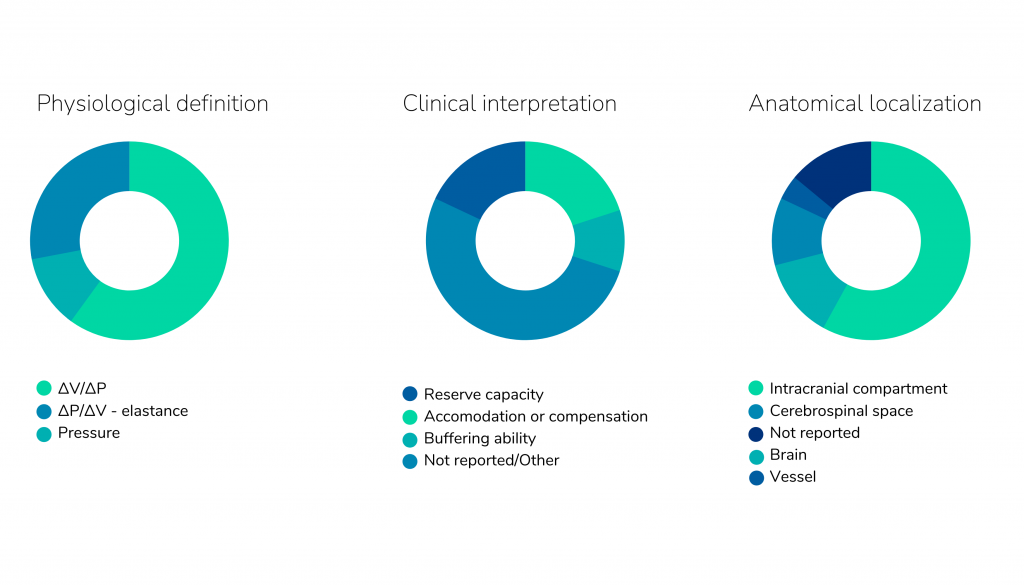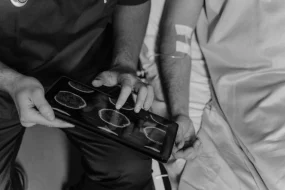
The study had an initial sample of almost 43,000 articles in journals and scientific databases and has evaluated the physiological definition, clinical interpretation and anatomical location of intracranial compliance
The scientific article “Intracranial compliance concepts and assessment: A scoping review”, published in the scientific journal Frontiers in Neurology, has mapped the definitions and clinical and scholarly uses of the notion of intracranial compliance, the ability of intracranial components to adapt to pressure and volume variations.
Intracranial compliance has great potential for health diagnoses of the dynamics between the components of the skull – blood, cerebrospinal fluid and brain. Its monitoring may help identify the imbalance between these components and assist in clinical decision-making long before a patient’s condition progresses to a serious stage.
The lead author of the paper is Gabriela Nagai Ocamoto, a physiotherapist and PhD candidate in Neurological Physiotherapy at the Federal University of São Carlos (UFSCar). Ocamoto concluded that the monitoring of intracranial compliance (ICC) has a clear applicability in the clinical context and may be considered an essential resource to complement the monitoring and examination of intracranial pressure (ICP).
In addition, CIC monitoring may help predict the deterioration of brain function. The study also suggests that it is necessary to combine and validate invasive and non-invasive measurement methods to have a better understanding and assessment of the patient’s clinical condition.
Based on the scope review method, the study used keyword and descriptors combinations in search for definitions of intracranial compliance among major journals and scientific databases. 42,851 articles were identified in the selection; 297 studies met the inclusion criteria for intracranial compliance after the selection process.
“Through research, we were able to comprehensively identify the meanings of intracranial compliance. If in future studies it becomes necessary to identify different points of view on this concept, it will be possible to develop hypotheses related to different pathologies”, explains the researcher.
“The context of the pathology itself may provide information that could be related to compliance. Thus, there are greater possibilities for approaching and monitoring, not only focused on the care of neurocritical patients, in which the notion of compliance and its implications are already more familiar”, she adds.
For Thiago Luiz de Russo, professor of the Graduate Program in Physiotherapy at UFSCar and corresponding author of the study, the main relevance of the study is the establishment of a fertile field for the development of new research in the area, showing some gaps and future directions
“When we map a concept, we are able to provide points of consensus around it so that the research community can use it, having in mind the implications and relationships established with other concepts that are important for neurointensivism. The scope review work allows for a standardization of terms and a clear listing of their clinical implications and known correlations between distinct biological signs, for example”, he points out.
Results and notes identified during the research
The mapping was organized into three main components: physiological definition, clinical interpretation and anatomical location of the phenomena. Most studies reported the concept of compliance related to variations in volume and pressure or their inverse (elastance), especially in the intracranial compartment.
In addition, terms such as “accommodation”, “compensation”, “reserve capacity” and “damping capacity” were used to describe the clinical interpretation. Most studies describe compliance as an intracranial phenomenon. Finally, standardization of terminology is essential to ensure more effective communication between researchers and clinicians.

“We were able to have a better understanding of the different meanings about intracranial compliance and the role of ICP analysis for its measurement, as well as verifying whether the definition of intracranial compliance appeared linked to forms of monitoring, both invasive and non-invasive, in a context of neurocritical care. From this selection, 520 articles were read in their entirety, 297 of which were included to carry out a complete review of the outcomes brought by them”, comments Gabriela.
The paper also described the techniques (both invasive and non-invasive) and the results used to monitor and interpret intracranial compliance. The most frequently used methods were invasive, which comprised 57% of the total.
The most commonly assessed variables were related to ICP, and were mainly absolute values or pulse amplitude. It was concluded that the intracranial pressure waveforms still need to be better explored, together with the potential of non-invasive methods, since different aspects of intracranial compliance may be interpreted from these forms of monitoring.
The article “Intracranial compliance concepts and assessment: A scoping review”, authored by Gabriela Nagai Ocamoto, Thiago Russo, Rafaella Mendes Zambetta, Gustavo Frigieri, Cintya Yukie Hayashi, Sérgio Brasil, Nícollas Nunes Rabelo and Deusdedit Lineu Spavieri Júnior, was published on October 25, 2021 in the journal Frontiers in Neurology. The text can be accessed through DOI 10.3389/fneur.2021.756112





